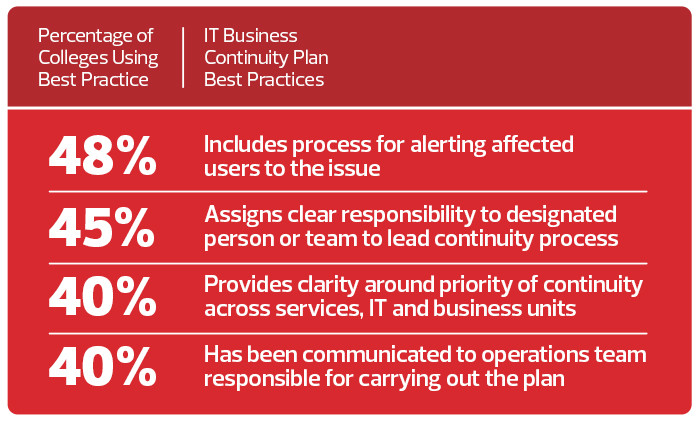Business Continuity: How Solid Is Higher Ed’s Plan B?
While no one expects higher education to have a crystal ball and predict the future, IT and administrative leaders must be prepared for worst-case scenarios. Unfortunately, the COVID-19 pandemic revealed that while many colleges had some business continuity plans in place, the formality and maturity of those plans left much to be desired.
In an analysis of higher ed’s preparedness following COVID-19, Susan Grajek, vice president of communities and research at EDUCAUSE, and D. Christopher Brooks, director of research for the EDUCAUSE Center for Analysis and Research, found that “only 42 percent of institutions have a formal IT business continuity plan that includes the policies, resources, and procedures necessary to enable the continuation or speedy recovery of vital technology infrastructure and systems and of normal business operations following a natural or human-induced disaster.”
MORE ON EDTECH: How University Faculty Embraced the Remote Learning Shift.
The main takeaway from COVID-19 is that higher education has to be prepared to shift at a moment’s notice to its Plan B. If your college or university hasn’t focused on world-changing “what if” business continuity scenarios before, you must start now.
To get started down a path toward better business continuity, here’s a list of the most common best practices for higher ed institutions and their IT staff, according to EDUCAUSE’s IT Business Continuity maturity index:










